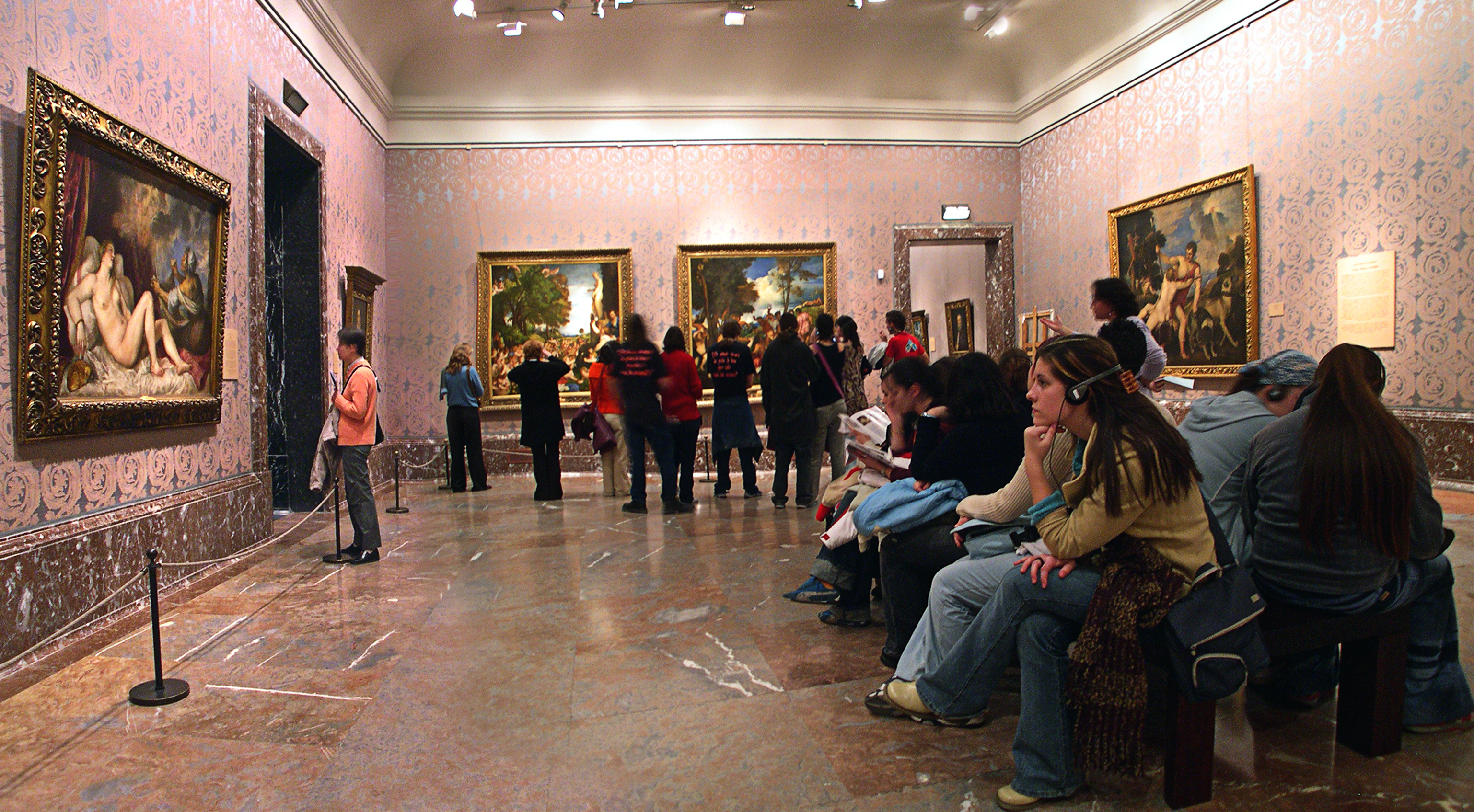The Worship of Venus on:
[Wikipedia]
[Google]
[Amazon]
__NOTOC__
 ''The Worship of Venus'' is an oil on canvas painting by the Italian artist
''The Worship of Venus'' is an oil on canvas painting by the Italian artist
Philostratus's ''Imagines'' 1.6 (Cupids)
Fairbanks translation at the Theoi Classical Texts Library. {{DEFAULTSORT:Worship of Venus, The 1519 paintings Paintings by Titian in the Museo del Prado Paintings commissioned for the camerini d'alabastro Paintings of Venus Nude art Paintings of Cupid Angels in art Mythological paintings by Titian
 ''The Worship of Venus'' is an oil on canvas painting by the Italian artist
''The Worship of Venus'' is an oil on canvas painting by the Italian artist Titian
Tiziano Vecelli or Vecellio (; 27 August 1576), known in English as Titian ( ), was an Italian (Venetian) painter of the Renaissance, considered the most important member of the 16th-century Venetian school. He was born in Pieve di Cadore, nea ...
completed between 1518 and 1519, housed at the Museo del Prado in Madrid
Madrid ( , ) is the capital and most populous city of Spain. The city has almost 3.4 million inhabitants and a Madrid metropolitan area, metropolitan area population of approximately 6.7 million. It is the Largest cities of the Europ ...
, Spain. It describes a Roman
Roman or Romans most often refers to:
*Rome, the capital city of Italy
*Ancient Rome, Roman civilization from 8th century BC to 5th century AD
*Roman people, the people of ancient Rome
*'' Epistle to the Romans'', shortened to ''Romans'', a lette ...
rite of worship conducted in honour of the goddess Venus
Venus is the second planet from the Sun. It is sometimes called Earth's "sister" or "twin" planet as it is almost as large and has a similar composition. As an interior planet to Earth, Venus (like Mercury) appears in Earth's sky never f ...
each 1 April. On this occasion, women would make offerings to representations of the goddess so as to cleanse "every blemish on their bodies".Hope & Fletcher & Dunkerton, 110
In Titian's work, two nymph
A nymph ( grc, νύμφη, nýmphē, el, script=Latn, nímfi, label= Modern Greek; , ) in ancient Greek folklore is a minor female nature deity. Different from Greek goddesses, nymphs are generally regarded as personifications of nature, are ...
s, one young and one matronly, are situated to the right of the ceremony, attending to a shrine holding a representation of Venus. The shrine is surrounded by votive
A votive offering or votive deposit is one or more objects displayed or deposited, without the intention of recovery or use, in a sacred place for religious purposes. Such items are a feature of modern and ancient societies and are generally ...
tablets. The older woman checks on the decorations with the use of a mirror which she holds high in her extended right hand. The foreground of the canvas is thronged with a swarm of male infants, or ''putti
A putto (; plural putti ) is a figure in a work of art depicted as a chubby male child, usually naked and sometimes winged. Originally limited to profane passions in symbolism,Dempsey, Charles. ''Inventing the Renaissance Putto''. University of ...
'', who distract themselves in activities such as climbing trees, leaping, flying, gathering apples, lying around, fighting, fondling, shooting arrows and pulling each other's hair. A dam is shown in the middle background, near a sunlit meadow. The far distance is decorated with a mountain and blue sky.
Titian based the image on the writings of the Greek sophist
A sophist ( el, σοφιστής, sophistes) was a teacher in ancient Greece in the fifth and fourth centuries BC. Sophists specialized in one or more subject areas, such as philosophy, rhetoric, music, athletics, and mathematics. They taught ' ...
Philostratus
Philostratus or Lucius Flavius Philostratus (; grc-gre, Φιλόστρατος ; c. 170 – 247/250 AD), called "the Athenian", was a Greek sophist of the Roman imperial period. His father was a minor sophist of the same name. He was born probab ...
.Claude, 73 In his "Imagines I, VI", Philostratus wrote, "See cupids are gathering apples: and if there are many of them, do not be surprised...The cupids' quiver are studded with gold, and golden also are the darts in them...they have hung their quivers on the apple trees; and in the grass lie their broidered mantles...Ah, the baskets into which they gather their apples!"
See also
* ''The Feast of Venus'' (Rubens)References
Sources
* Hope, Charles & Fletcher, Jennifer & Dunkerton, Jill. ''Titian''. National Gallery London, 2003. * Kaminski, Marion. ''Titian''. Ullmann, 2007. *Phillips, Claude. ''The Earlier Work of Titian''. Bastian Books, 2008. * Francesco Valcanover, ''L'opera completa di Tiziano'', Rizzoli, Milano 1969. * Stefano Zuffi, ''Tiziano'', Mondadori Arte, Milano 2008.External links
Philostratus's ''Imagines'' 1.6 (Cupids)
Fairbanks translation at the Theoi Classical Texts Library. {{DEFAULTSORT:Worship of Venus, The 1519 paintings Paintings by Titian in the Museo del Prado Paintings commissioned for the camerini d'alabastro Paintings of Venus Nude art Paintings of Cupid Angels in art Mythological paintings by Titian